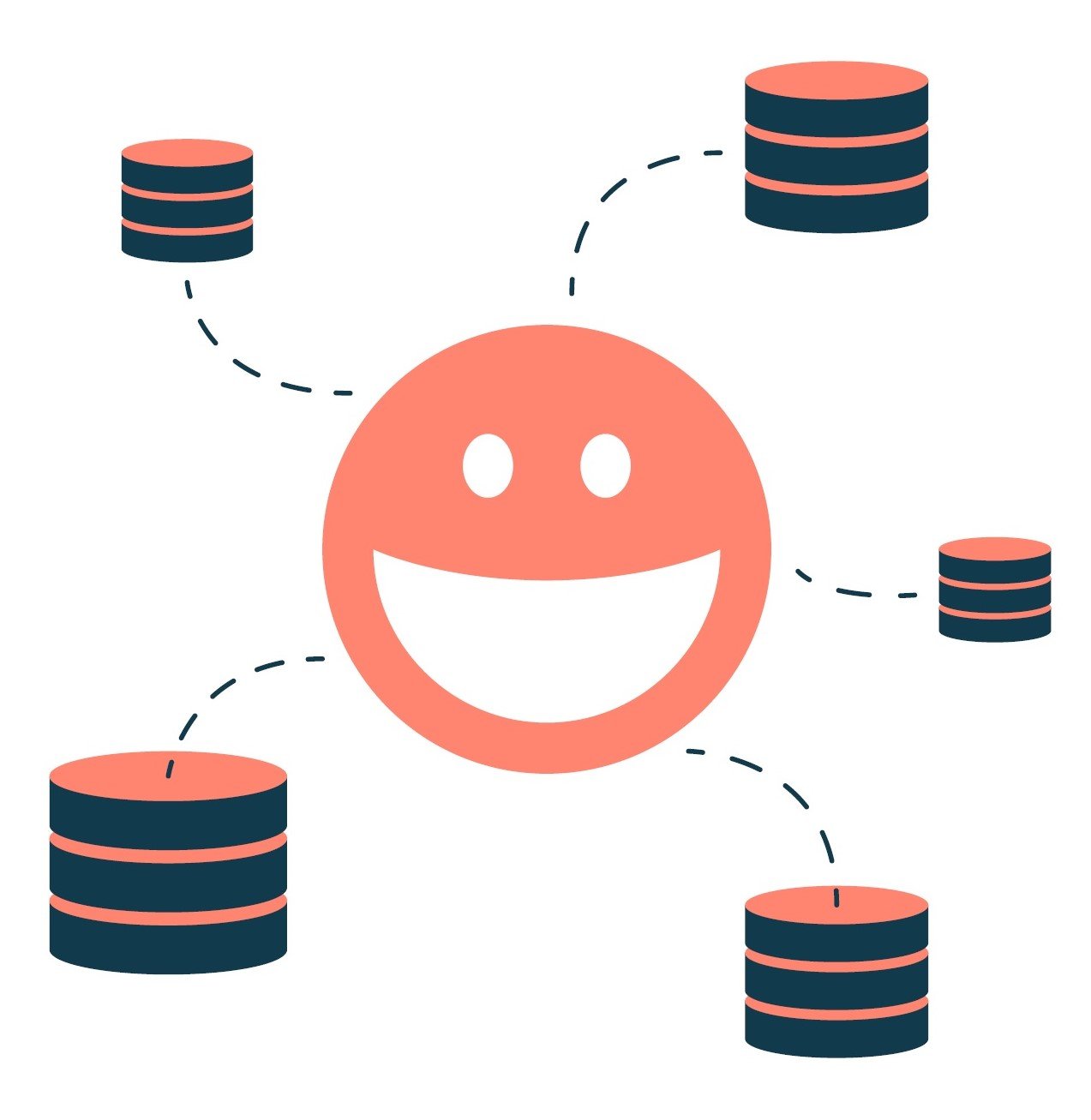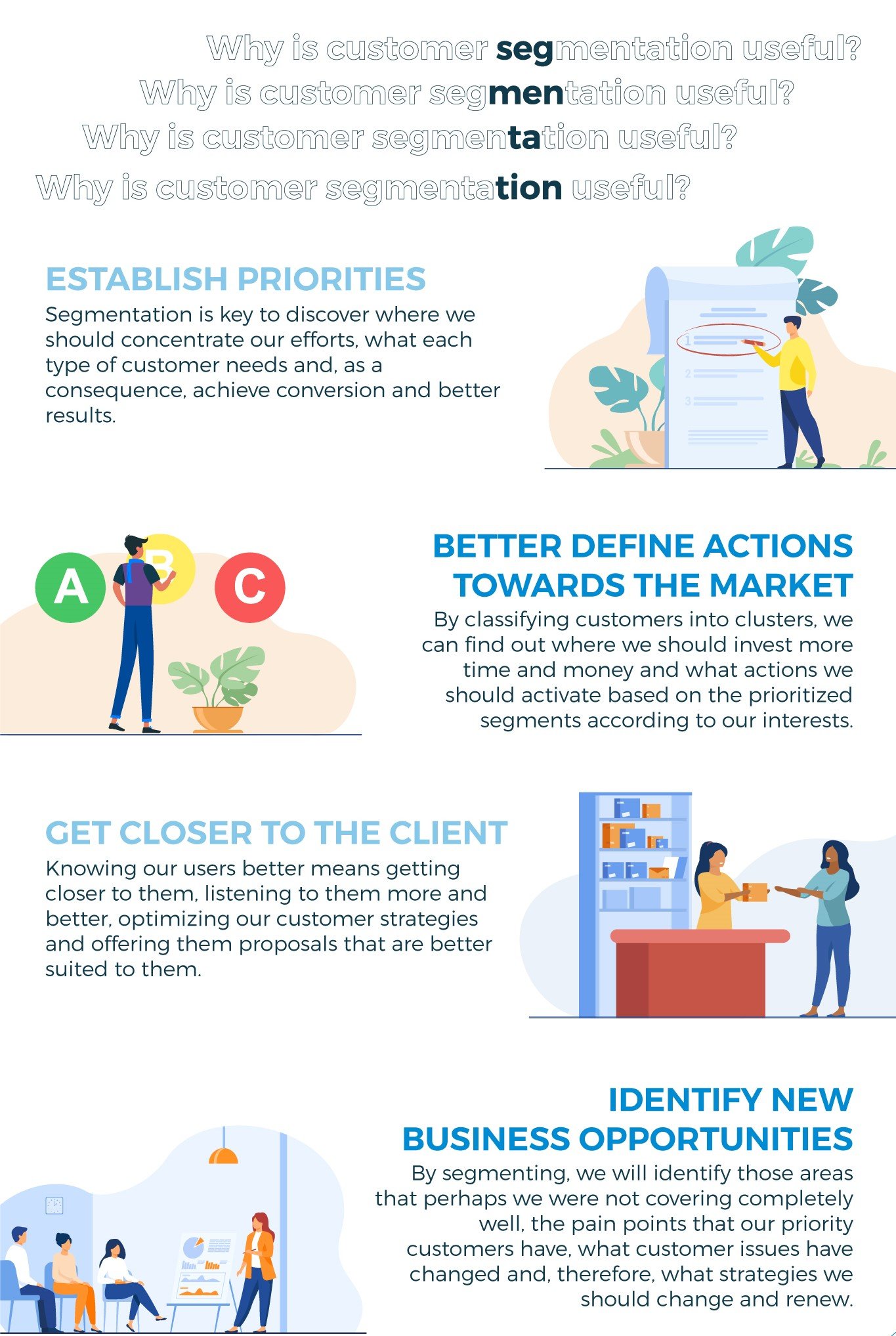As companies move towards customer-centric business strategies, knowing the customer becomes one of the top priorities for companies. Customer segmentation is at the heart of the knowledge-gaining process. In this article we explore customer segmentation and explain how to segment customers.

Customer segmentation has become a key resource for marketing, sales and marketing strategies. Customer segmentation is the foundation of any customer-centric strategy, as well as the first step in conducting customer insight models, developing retention strategies and creating personalised customer experiences.
As a business grows, so does its customer portfolio. As the number of clients expands, the chances of customers fitting into a single profile decrease and the difficulties in managing and serving their needs increase. Because of this, customer segmentation is fundamental and what allows companies to align their customer strategies to the needs of each type of consumer.
What is customer segmentation?
Customer segmentation is a methodology that consists of classifying customers into groups or categories according to their characteristics. It covers customers who are already part of our client portfolio, as well as potential and target customers.
The purpose of customer segmentation is to match different types of customers with other people who have similar interests and needs for the later development of personalised customer intelligence, marketing, commercial and sales strategies.
Clearly, all companies have customers with different characteristics. Although the products or services we offer are the same for all of them, the way we communicate with them and their customer experience must be adapted to the needs of each client. This is the only way to satisfy them and offer them what they need, how they need it and through valuable experiences.
Data analysis plays a major role in customer segmentation. To divide customers into segments, it is necessary to have reliable customer data and to analyse it in order to find similarities and differences between our clients. In this regard, Single Customer Views are particularly handy, as they provide a unique data repository for each customer.
Types of customer segmentations
Obviously, all customers are not the same and, in the same way, all segmentations aren't either. In fact, companies have the possibility to choose between a wide range of segmentation possibilities and, in many cases, they carry out more than one type of segmentation.
When segmenting, the type of segmentation we apply will vary according to the purpose of the segmentation. For example, some segmentations such as buyer persona aim to build complete profiles of consumers, while others are more specific and focus only on their profitability and consumption habits.
Some of the most common types of customer segmentations are:
- Buyer persona: The creation of buyer personas is one of the most common forms of segmentation among companies, especially in marketing and sales. It is a model that consists of creating comprehensive profiles about each type of customer anddevelopment techniques can have similarities with storytelling.
- Lifecycle segmentation: This type of segmentation focuses on the age of consumers and their lifestyle, behaviour and consumption habits, among others.
- Transactional segmentation: Customers are segmented according to their purchasing behaviour in terms of the products or services acquired, the frequency of purchase, the amount of product, the money spent, etc.
- RFM (Recency, Frecuency, Monetary): RFM is a segmentation model based on three variables: Recency (the last time the customer made contact with the company), Frequency (their consumption frequency) and Monetary (the value of their purchase).
- Customer clustering: Customer clustering is a form of segmentation that applies machine learning algorithms to customer segments. The algorithms identify similarity patterns between groups of customers and detect more specific variants between customers in the same segment.
- ABC: ABC segmentation classifies customers according to their contribution to turnover and profitability.
Interested in the ABC segmentation model? Discover Bismart ABC Client Analysis.
These are some of the most common types of customer segmentation, but each company should choose the segmentation model that best suits its business needs and types of customers. As mentioned above, organisations can also choose to implement multiple segmentations.
Our customer segmentation model
Kale has its own customer segmentation model, based on the tool: Customer Segmentation.
Kale's multidisciplinary team allows us to develop advanced segmentations based on a transactional and enriched model of customer clusters.
We perform all types of customer segmentations and adapt the strategy, methodology and typology of our segmentations to each client's business needs.
How to segment customers?
Starting a customer segmentation process is no easy task.
The first step should always be the collection, integration and analysis of data for its future exploitation.
After analysing the data, consolidating it and ensuring that it is reliable and of high quality, we must choose the type of segmentation that best suits our strategic objectives and carry it out without losing sight of our business logic.
Want to find out how to segment customers? Download our tips on how to segment customers!
Customer segmentation: Why is it important?
Customer segmentation has numerous business benefits. Not only is it one of the most effective ways to devise marketing and commercial strategies, and personalised customer experiences, products and services; but the process itself helps companies gain knowledge about their customers and discover important information they may not have. In this sense, carrying out a segmentation process is a source of knowledge.
Customer segmentation is often followed by valuable insights that allow companies to rethink their business strategies towards greater cohesion with customers' needs and pain points, optimise the customer experience, increase customer retention rates and enhance their sales, marketing and commercial resources.

Customer segmentation has become a priority for most companies. Carrying out segmentation processes helps organisations to better understand their customers, identify areas for improvement, create personalised strategies and generate business opportunities.




